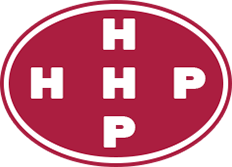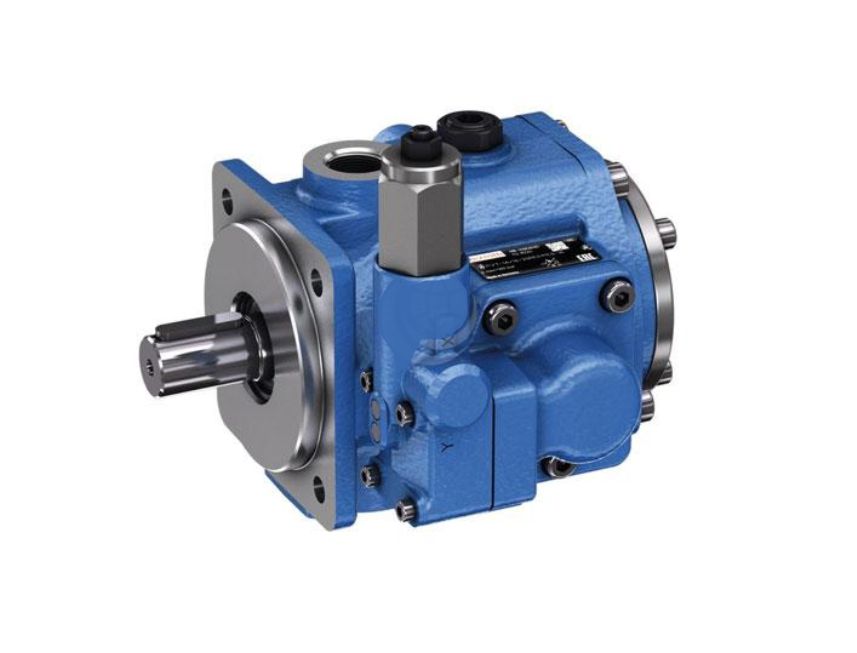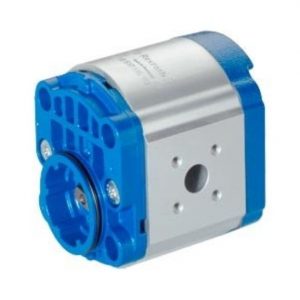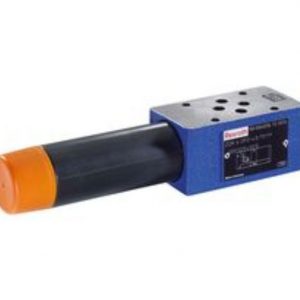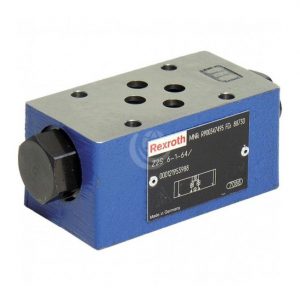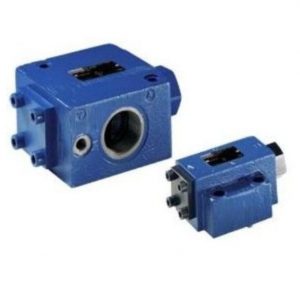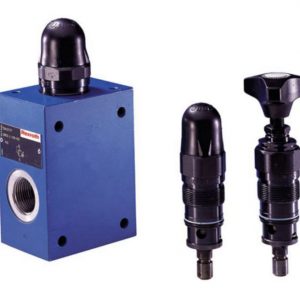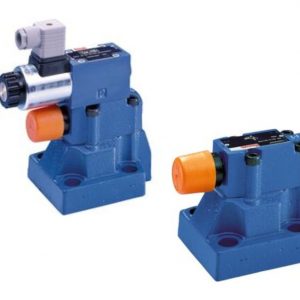Adjustable Vane Pump PV7
Type PV7 hydraulic pumps are vane pumps with variable displacement. They consist essentially of the housing, rotor, vanes, stator ring, pressure controller and flow adjusting screw. The annular stator ring is fixed by the small floating stroking piston and the large floating set piston. The ring is fixed at a third location by the height adjusting screw.
Product Description
The driven rotor rotates within the stator ring. The vanes are guided in the rotor and are pressed against the inner running surface of the stator ring by centrifugal force.
Suction and displacement procedure
The chambers required for the transport of hydraulic fluid are formed by the vanes, the rotor, the stator ring, and the control plate. To ensure pump function on commissioning, the stator ring is held in its eccentric position (displacement position) by the spring behind the large floating stroking piston. The chamber volume increases as the rotor rotates and the chambers are filled with hydraulic fluid through the suction channel. When the greatest chamber volume is reached, the chambers are separated from the suction side. As the rotor continues to rotate, the connection to the pressure side is opened, and the chambers decrease in size and force the hydraulic fluid into the system through the pressure channel (P).
Adjustment
As pressure builds in the system, the back of the small floating stroking piston is always pressurized through a channel. In the flow position, the back of the large stroking piston is also pressurized through a bore in the regulator spool. The large stroking piston, with the larger surface, holds the stator ring in its eccentric position. The pump displaces fluid at a pressure that is below the zero stroke pressure set on the pressure controller. The regulator spool is held in a certain position by the spring.
Pressure relief :
If the force FP produced by pressure x area exceeds the counterforce FF of the spring, the regulator spool is pushed against the spring. This connects the space behind the large floating stroking piston to the tank, relieving pressure. The small set piston, which is always under system pressure, moves the stator ring to virtually the center position. The pump maintains pressure, flow returns to zero, leakages are replaced. Power loss and fluid heating are minimal. The characteristic curve qV-p runs vertically and moves parallel to various high pressures that are set.
